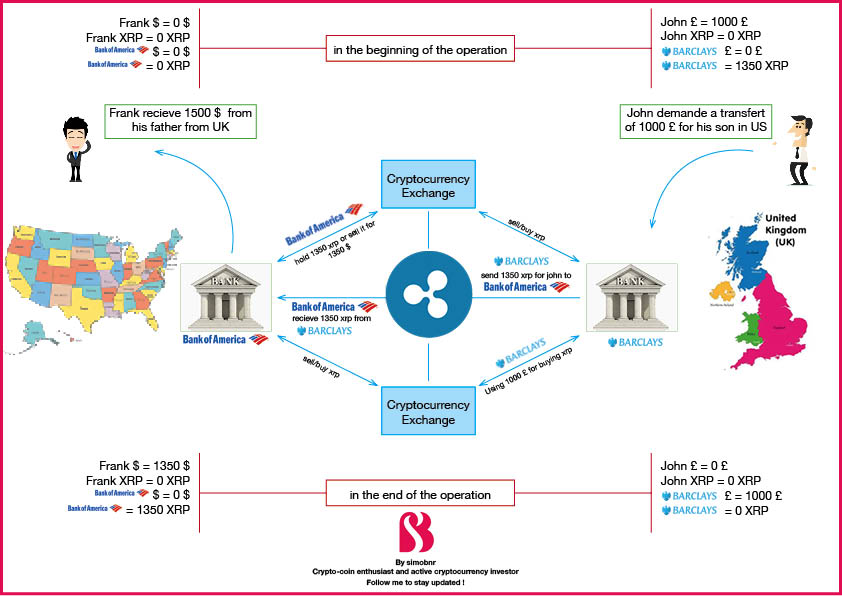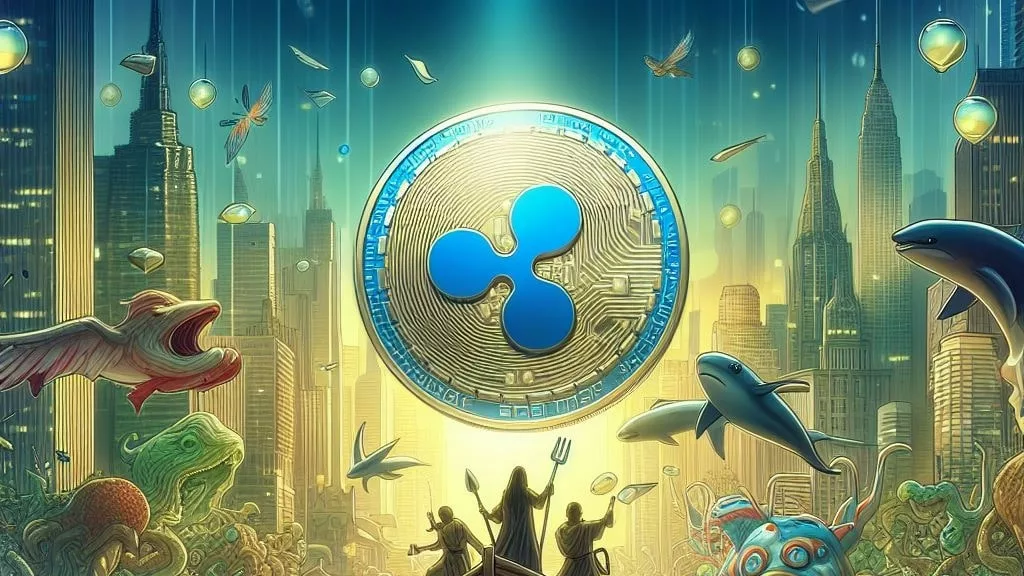Understanding XRP: Ripple's Cryptocurrency Explained

Table of Contents
What is XRP and How Does it Work?
XRP's functionality is deeply intertwined with the Ripple ecosystem. Unlike cryptocurrencies that rely on Proof-of-Work (PoW) or Proof-of-Stake (PoS) consensus mechanisms, XRP utilizes a unique consensus mechanism known as the Ripple Protocol Consensus Algorithm (RPCA). This algorithm allows for incredibly fast transaction processing and significantly lower fees compared to many other cryptocurrencies. This speed and efficiency are crucial for its primary use case: facilitating near-instantaneous international money transfers.
- XRP facilitates fast and efficient cross-border payments: Transactions are settled in a matter of seconds, a stark contrast to the days or even weeks it can take with traditional banking systems.
- Transactions are significantly cheaper than traditional banking methods: Lower transaction fees make XRP a cost-effective solution for businesses and individuals sending money internationally.
- Uses a unique consensus mechanism for secure and rapid transaction processing: The RPCA ensures the security and speed of transactions, making it ideal for high-volume payment processing.
- Scalability is a key advantage, allowing for high transaction volume: The Ripple network can handle a large number of transactions concurrently, making it suitable for large-scale financial applications.
RippleNet and XRP's Role in Global Payments
RippleNet is a global network that connects banks, payment providers, and other financial institutions. XRP plays a vital role in this network by enabling faster and more cost-effective cross-border transactions. Instead of relying on traditional correspondent banking networks, which are often slow, expensive, and opaque, RippleNet utilizes XRP to streamline the process. This results in reduced processing times, lower fees, and increased transparency for all parties involved.
- RippleNet connects banks and financial institutions globally: This creates a seamless network for international payments, breaking down geographical barriers.
- XRP enables faster and cheaper international money transfers: The speed and low cost of XRP transactions are key advantages for businesses and consumers alike.
- Reduces reliance on traditional correspondent banking networks: This reduces costs and speeds up processing times considerably.
- Offers increased transparency and traceability for transactions: All transactions on the Ripple network are recorded on the blockchain, providing a clear audit trail.
XRP vs. Other Cryptocurrencies
Comparing XRP to other major cryptocurrencies like Bitcoin and Ethereum reveals significant differences in their functionality and design. Bitcoin, for instance, functions primarily as a store of value and a decentralized medium of exchange, while Ethereum supports smart contracts and decentralized applications (dApps). XRP, on the other hand, is primarily designed for fast and efficient payments, particularly cross-border transactions.
- Comparison Table:
| Feature | XRP | Bitcoin | Ethereum |
|---|---|---|---|
| Primary Use Case | Payments | Store of Value, Payments | Smart Contracts, dApps |
| Consensus | RPCA | Proof-of-Work | Proof-of-Stake |
| Transaction Speed | Very Fast | Relatively Slow | Moderate |
| Transaction Fees | Very Low | Relatively High | Moderate |
| Decentralization | Relatively Centralized | Highly Decentralized | Decentralized |
- XRP's centralized nature: Unlike Bitcoin's highly decentralized structure, Ripple maintains some control over the XRP ledger, a key point of contention for some critics.
- XRP's price volatility: Like all cryptocurrencies, XRP's price is subject to market fluctuations and volatility. This poses inherent risks for investors.
The Future of XRP and its Potential
Predicting the future of any cryptocurrency is inherently speculative. However, several factors could significantly influence XRP's future adoption and price. Increased adoption by financial institutions, continued development of RippleNet, and favorable regulatory developments could all contribute to its growth. Conversely, regulatory uncertainty or the emergence of competing technologies could pose challenges.
- Potential future applications and partnerships: Ripple continues to expand its network and partnerships, opening doors to new use cases for XRP.
- Analysis of the regulatory landscape and its impact on XRP: The regulatory environment will play a crucial role in shaping XRP's future.
- Overview of the potential risks and rewards associated with investing in XRP: Investing in XRP carries inherent risks, including price volatility and regulatory uncertainty.
Conclusion
XRP, the cryptocurrency powering RippleNet, offers a compelling solution for fast, efficient, and low-cost global payments. Its unique consensus mechanism, coupled with its integration into RippleNet, allows for rapid cross-border transactions, significantly reducing processing times and fees compared to traditional banking methods. While differences exist compared to decentralized cryptocurrencies like Bitcoin and Ethereum, XRP’s focused approach to payments offers a potent alternative within the financial technology landscape. Learn more about XRP and explore RippleNet's capabilities to understand the potential of XRP in global payments and its impact on the future of finance.

Featured Posts
-
 Dalla Star Priscilla Pointer Passes Away At Age 100
May 01, 2025
Dalla Star Priscilla Pointer Passes Away At Age 100
May 01, 2025 -
 Businessmans Bold Dragon Den Move Snubbing Offers For A Risky Deal
May 01, 2025
Businessmans Bold Dragon Den Move Snubbing Offers For A Risky Deal
May 01, 2025 -
 Bharty Hkwmt Ky Kshmyr Palysy Agha Syd Rwh Allh Mhdy Ka Skht Rdeml
May 01, 2025
Bharty Hkwmt Ky Kshmyr Palysy Agha Syd Rwh Allh Mhdy Ka Skht Rdeml
May 01, 2025 -
 Analyzing Xrp Ripple At Sub 3 Prices Buy Or Sell
May 01, 2025
Analyzing Xrp Ripple At Sub 3 Prices Buy Or Sell
May 01, 2025 -
 Brtanwy Wzyr Aezm Kw Kshmyr Ke Msyle Pr Thryry Drkhwast
May 01, 2025
Brtanwy Wzyr Aezm Kw Kshmyr Ke Msyle Pr Thryry Drkhwast
May 01, 2025
Latest Posts
-
 Veteran Actress Priscilla Pointer Amy Irvings Mother Dead At 100
May 01, 2025
Veteran Actress Priscilla Pointer Amy Irvings Mother Dead At 100
May 01, 2025 -
 Priscilla Pointer Carrie Actress And Amy Irvings Mother Passes Away At 100
May 01, 2025
Priscilla Pointer Carrie Actress And Amy Irvings Mother Passes Away At 100
May 01, 2025 -
 100 Year Old Actress Priscilla Pointer Known For Carrie Passes Away
May 01, 2025
100 Year Old Actress Priscilla Pointer Known For Carrie Passes Away
May 01, 2025 -
 Death Of Priscilla Pointer Actress And Mother Of Amy Irving Aged 100
May 01, 2025
Death Of Priscilla Pointer Actress And Mother Of Amy Irving Aged 100
May 01, 2025 -
 Actress Priscilla Pointer Star Of Carrie Dead At 100
May 01, 2025
Actress Priscilla Pointer Star Of Carrie Dead At 100
May 01, 2025
